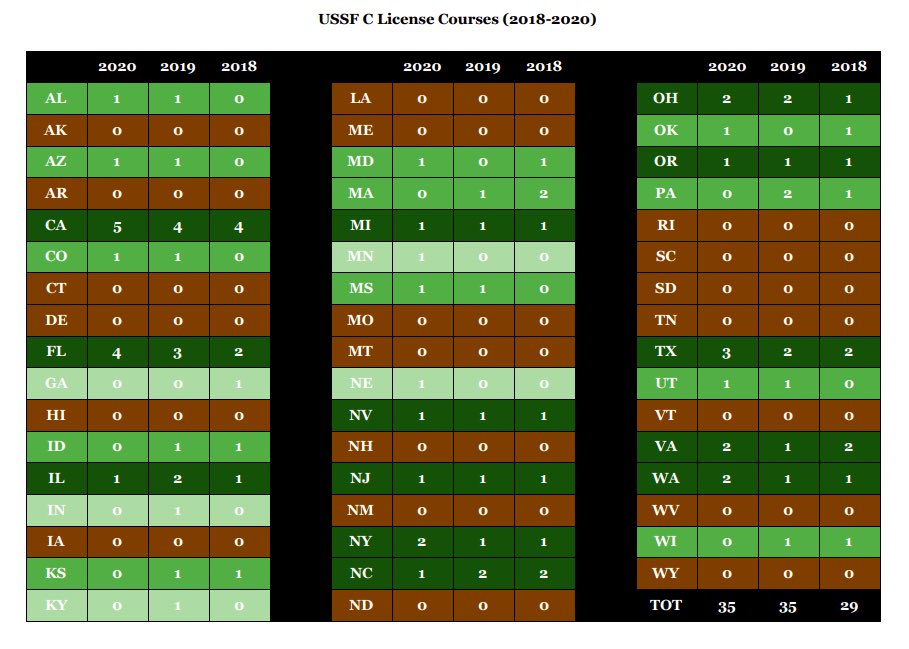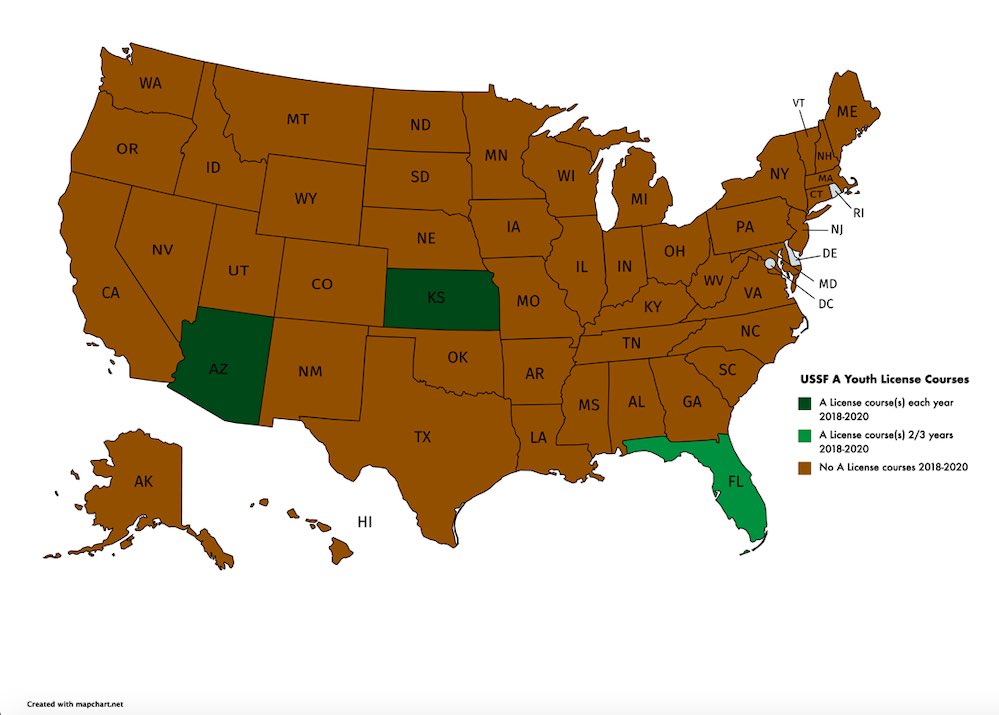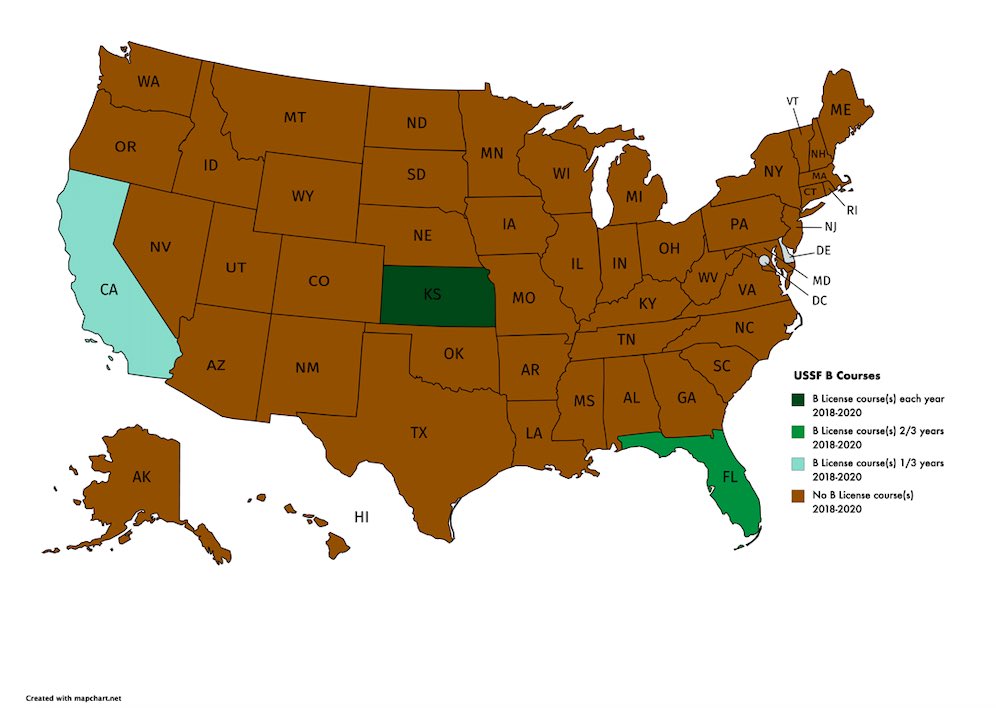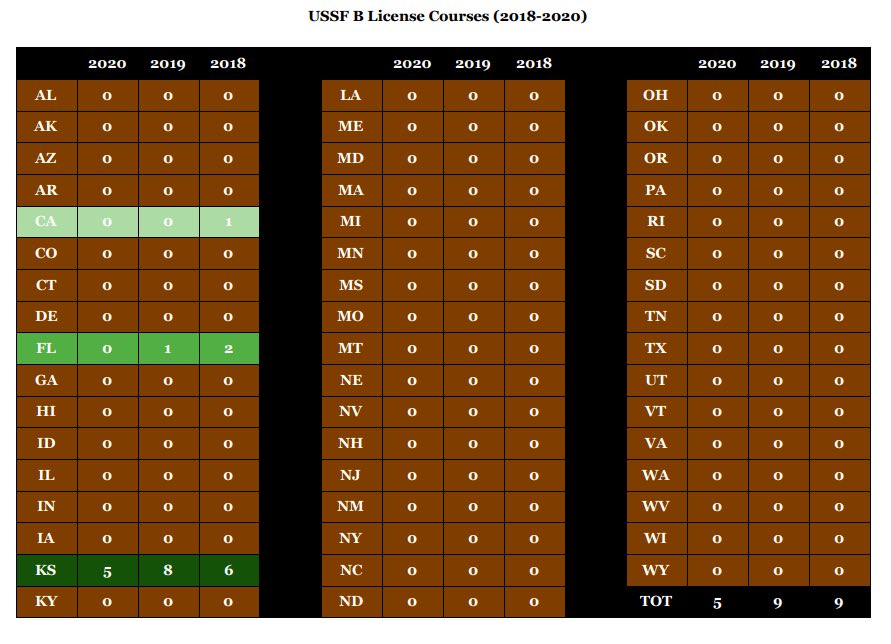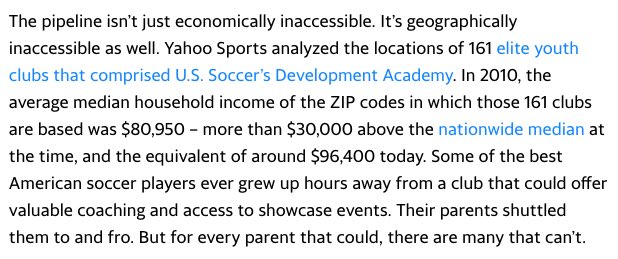On September 22 @HenryBushnell wrote a piece that explored the exclusivity that exists in American soccer, particularly our country’s youth soccer system: https://sports.yahoo.com/amphtml/the-privilege-of-play-why-the-worlds-game-is-a-white-game-in-the-us-150024228.html?__twitter_impression=true
We">https://sports.yahoo.com/amphtml/t... have a few thoughts.
We">https://sports.yahoo.com/amphtml/t... have a few thoughts.
The issues addressed in the article that perpetuate that exclusivity are multilayered and complex, but this excerpt describing the approach @opengoalproject and other fellow reformers are taking captured our attention:
This thread will be an ongoing effort to address a few different ways @ussoccer can help bring resources to players, instead of our current system that forces players to go to those resources--often at great expense in money, time, and travel.
The first resource we’ll explore is arguably the most far-reaching, impactful, and scalable: Coach education.
First, let’s start with the positive: The @ussoccer_coach structure in place for Grassroots and D License courses ensures these courses are relatively accessible and affordable for all clubs, which means coaches with this training are relatively accessible for all players.
On the other hand, accessible and affordable are not necessarily the best descriptors for the federation’s current approach to offering higher-level courses, with exclusivity starting to creep in at C courses before escalating into full-blown elitism with A and B licenses.
Here’s a map that shows the geographical distribution of C License courses, and a table that shows the frequency of those courses by state over the last three years (2018-2020).
Half of our states have either not hosted a C License course in the last three years, or have hosted a course in only one of those three years.
Also: In 2018, 21 states hosted 29 courses; in 2019, 25 states hosted 35 courses; and in 2020, 22 states are hosting 35 courses.
Also: In 2018, 21 states hosted 29 courses; in 2019, 25 states hosted 35 courses; and in 2020, 22 states are hosting 35 courses.
Fortunately, there is a national task force chaired by @mikecullina and staffed by @zaccraw4d that has identified this issue and has come up with pragmatic proposals to improve the accessibility of C License courses: https://www.ussoccer.com/stories/2019/11/us-soccer-youth-task-force-announces-first-wave-of-coaching-working-group-initiatives">https://www.ussoccer.com/stories/2...
Moreover, that task force’s efforts are also focused on increasing the value of the C License and the multiplier effect those license-holders can have on growing the number of coaches who earn D and Grassroots licenses.
But that’s where the encouraging trends end.
But that’s where the encouraging trends end.
Here are maps and tables that show where courses for the two highest-level licenses, the A-youth and the B, were held from 2018-2020:
(You know that feeling when you’re not supposed to be surprised by something, but you’re still a little stunned when you see it?
Well, that was us when we saw these maps and tables.)
Well, that was us when we saw these maps and tables.)
And it gets worse when you consider the resources it takes to access these exclusive and elitist licensing structure.
Besides the monetary costs of the courses themselves ($3,000 and $4,000 respectively) there are the hidden costs of travel and time. (Sound familiar?)
Besides the monetary costs of the courses themselves ($3,000 and $4,000 respectively) there are the hidden costs of travel and time. (Sound familiar?)
As the maps indicate, the higher-level courses’ tiny geographical footprint all but guarantees a participant needs to travel. And both courses require three separate 5-day in-person stints.
So along with the $3,000-$4,000 course fee a participant is likely paying for airfare for three separate flights, not to mention forfeiting vacation time and/or income from those three weeklong in-person sessions.
Which brings us back to Bushnell’s @yahoosports piece.
Which brings us back to Bushnell’s @yahoosports piece.
Remember that C License course map? Eighteen of the 22 states that have not hosted a C License were also not home to one of those 161 clubs cited by Bushnell.
Moreover, we estimate those 22 states without licensing opportunities represent roughly 350,000 @USYouthSoccer players.
Moreover, we estimate those 22 states without licensing opportunities represent roughly 350,000 @USYouthSoccer players.
And which clubs are most likely able to subsidize or pay the thousands of dollars for their coaches’ higher-level courses? Most likely those clubs in those lucrative ZIP codes Bushnell refers to.
So in effect we’ve created a virtuous circle for a tiny number of our clubs: Advertise your higher-level coaches, charge higher participation fees which help you secure those higher-level licenses, let the exclusivity continue to feed into the exclusivity.
Of course this also means we’ve also created a vicious circle for a vast majority of our more accessible clubs: The players go to the resources, because—well—that’s where the resources are.
So here’s our proposal for bringing coaching resources to players—to paraphrase our fellow reformers: Host at least one C License course in every state by 2022, one B License course in every state by 2024, and one A License course in every state by 2026.
Instead of hundreds of our country’s coaches earning a C License every year, we should be striving to count that number in the tens of thousands before we host the 2026 @FIFAWorldCup.
And instead of limiting the number of coaches earning an A or a B license to the dozens every year, we should do everything we can to push that number into the thousands within the next five years.
In the meantime, we can boost informal learning opportunities because certification classes are not the only form of coach education, and a higher-level licensed coach isn’t always necessarily a better coach.
The world has gotten even flatter over the six months, so we can explore the addition of many other ideas that coaches are asking for such as continuing education, mentoring programs, and Massive Open Online Courses.
The pessimist looks at all that brown on our maps and tables and sees barren ground.
We see the rich, fertile soil required to #GrowTheGame https://abs.twimg.com/emoji/v2/... draggable="false" alt="🌱" title="Setzling" aria-label="Emoji: Setzling">
https://abs.twimg.com/emoji/v2/... draggable="false" alt="🌱" title="Setzling" aria-label="Emoji: Setzling"> https://abs.twimg.com/emoji/v2/... draggable="false" alt="⚽️" title="Fußball" aria-label="Emoji: Fußball"> from the ground up.
https://abs.twimg.com/emoji/v2/... draggable="false" alt="⚽️" title="Fußball" aria-label="Emoji: Fußball"> from the ground up.
We see the rich, fertile soil required to #GrowTheGame

 Read on Twitter
Read on Twitter

